Glacial Activity
Glacial activity refers to the processes and features associated with the movement and melting of glaciers. Glaciers are large masses of ice that slowly flow over land due to the weight of the ice and the force of gravity. This movement, along with the melting of ice, results in a range of geological and hydrological effects on the landscape.
Key Concepts
- Formation of Glaciers: Glaciers form from the compaction and recrystallization of snow into ice over many years.
- Glacial Erosion: The movement of glaciers can erode the land through processes such as plucking and abrasion.
- Glacial Deposition: As glaciers melt, they deposit sediments and create landforms such as moraines and drumlins.
- Glacial Landforms: Features like cirques, aretes, and U-shaped valleys are formed by glacial erosion.
- Glacial Meltwater: The melting of glaciers contributes to the formation of streams, lakes, and other water bodies.
Study Guide
- What is the process through which glaciers form?
- How do glaciers contribute to land erosion?
- What are some landforms created by glacial activity?
- What role does glacial meltwater play in the landscape?
Answer: Glaciers form from the compaction and recrystallization of snow into ice over many years.
Answer: Glaciers can erode the land through processes such as plucking and abrasion.
Answer: Glacial activity can create landforms such as moraines, drumlins, cirques, aretes, and U-shaped valleys.
Answer: The melting of glaciers contributes to the formation of streams, lakes, and other water bodies.
◂Science Worksheets and Study Guides Kindergarten. All About Animals
Coloring Worksheet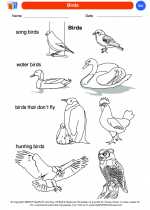 Birds
Birds  Coloring Worksheet
Coloring Worksheet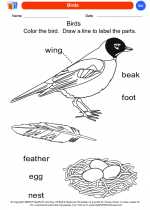 Birds
Birds  Coloring Worksheet
Coloring Worksheet Bugs
Bugs  Coloring Worksheet
Coloring Worksheet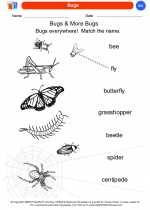 Bugs
Bugs  Coloring Worksheet
Coloring Worksheet Butterfly life cycle
Butterfly life cycle  Coloring Worksheet
Coloring Worksheet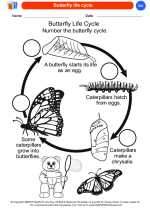 Butterfly life cycle
Butterfly life cycle  Coloring Worksheet
Coloring Worksheet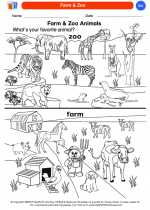 Farm & Zoo
Farm & Zoo  Coloring Worksheet
Coloring Worksheet Farm & Zoo
Farm & Zoo  Coloring Worksheet
Coloring Worksheet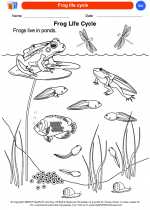 Frog life cycle
Frog life cycle  Coloring Worksheet
Coloring Worksheet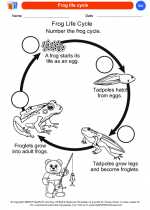 Frog life cycle
Frog life cycle  Coloring Worksheet
Coloring Worksheet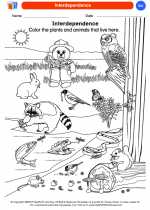 Interdependence
Interdependence  Coloring Worksheet
Coloring Worksheet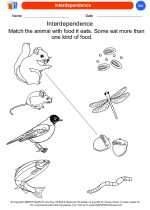 Interdependence
Interdependence  Coloring Worksheet
Coloring Worksheet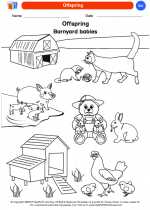 Offspring
Offspring  Coloring Worksheet
Coloring Worksheet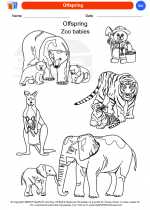 Offspring
Offspring  Coloring Worksheet
Coloring Worksheet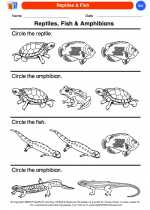 Reptiles & Fish
Reptiles & Fish  Coloring Worksheet
Coloring Worksheet Reptiles & Fish
Reptiles & Fish  Coloring Worksheet
Coloring Worksheet What animals need
What animals need  Coloring Worksheet
Coloring Worksheet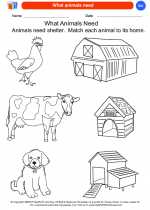 What animals need
What animals need 

 Coloring Worksheet
Coloring Worksheet
 Coloring Worksheet
Coloring Worksheet
 Coloring Worksheet
Coloring Worksheet
 Coloring Worksheet
Coloring Worksheet
 Coloring Worksheet
Coloring Worksheet
 Coloring Worksheet
Coloring Worksheet
 Coloring Worksheet
Coloring Worksheet
 Coloring Worksheet
Coloring Worksheet
 Coloring Worksheet
Coloring Worksheet
 Coloring Worksheet
Coloring Worksheet
 Coloring Worksheet
Coloring Worksheet
 Coloring Worksheet
Coloring Worksheet
 Coloring Worksheet
Coloring Worksheet
 Coloring Worksheet
Coloring Worksheet
 Coloring Worksheet
Coloring Worksheet
 Coloring Worksheet
Coloring Worksheet
 Coloring Worksheet
Coloring Worksheet

The resources above cover the following skills:
Science, Kindergarten, Adopted 2017 – The provisions of §§112.11-112.16 of this subchapter shall be implemented by school districts beginning with the 2018-2019 school year.
Knowledge and skills.
Organisms and environments. The student knows that organisms resemble their parents and have structures and processes that help them survive within their environments. The student is expected to:
sort plants and animals into groups based on physical characteristics such as color, size, body covering, or leaf shape
identify basic parts of plants and animals